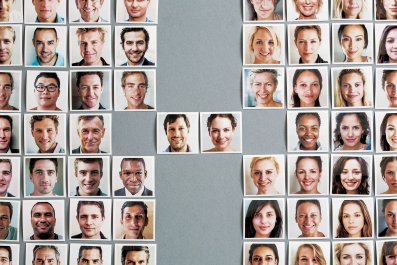On a recent Tuesday night, 30 people gathered at the dimly lit Black Ant restaurant in lower Manhattan for a bug banquet. The crowd passed a fuzzy blue caterpillar around the room while Lou Sorkin, an entomologist at the American Museum of Natural History in New York City, introduced them to various types of insects and the different ways they could be eaten. Gabi Lewis, co-founder of Exo, a line of protein bars made with cricket flour, shared how he and fellow Brown University student Greg Sewitz got into the business of edible insects. Then, without any shrieks or even squeamish faces, diners approached the buffet to sample black ant guacamole, grasshoppers crusted shrimps chipotle aioli and tostadas with agave worms.
"I felt as if I was permeating a barrier I constructed in my head," said Lydia Fazzio, organizer of Biohackers NYC, which hosted the event. Entomophagy, or the consumption of insects, is a regular part of the diets of more than 2 billion people in the world. In Mexico, beetles are a delicacy. Singaporeans take their scorpions fried and skewered. Rabbis in Israel continue to ponder whether or not locusts are kosher, while star chefs serve them up in the Promised Land.
Along with tasting good, insects are full of health benefits. Studies have shown that bugs are high in protein, calcium, zinc, iron and vitamin A. They are also easier to farm than livestock, use less water and emit fewer greenhouse gases. A 2013 report by the United Nations's Food and Agriculture Organization touted the benefits of eating bugs to fight world hunger and reduce pollution. Getting insects on Westerners' plates, though, is no easy task, requiring innovative strategies to overcome a deeply embedded cultural aversion to insects.
With the help of anthropologists, psychologists and cognitive neuroscientists, research labs and startup companies including Exo, Six Foods and Bitty Foods are working to bring edible insects to the free-range chicken–eating, Starbucks-sipping masses. By unraveling the emotion of disgust, these companies have found ways to package and market their creepy crawly foods, so people don't have to think about the fact that they're eating insects.
"People like to distance themselves from the food they're eating," said Lewis, whose $3 Exo bars come in flavors that include peanut butter and jelly, blueberry vanilla and cacao nut. When Lewis looks at the advent of eating insects in America, he sees a parallel to sushi's trajectory in this country, when California rolls were invented in Los Angeles in the 1970s to ease Westerners into eating raw fish. Chefs combined king crab meat with avocado, which has the texture of raw fish, and wrapped it in a layer of rice and seaweed. Now sushi is served throughout America in restaurants, airports and even hospital cafeterias.
Lewis held up one of his Exo bars. "This is our California roll of insect cuisine," he said.
'Never Eat Anything… '
In the 1960s, psychologists Paul Ekman and Wallace Friesen conducted a series of studies on the potential universality of facial expressions and their corresponding emotions. The team visited the remote South Fore tribe in Papua New Guinea and asked members to look at photos of facial expressions and try to identify what emotions were being portrayed. One of the photos was of the characteristic facial expression for disgust (you know it: corners of lip downturned, nose wrinkled, eyes slightly slit) originally taken by French neurologist Guillaume-Benjamin Duchenne in 1862. Despite the tribe's isolation from the rest of the world, it was able to easily identify the emotions expressed in the pictures. Further studies found that people from 21 different countries responded identically. The research proved that emotions and their corresponding facial expressions are innate and not learned. These emotions—including happiness, anger, sadness, surprise, fear and disgust—also serve an evolutionary purpose.
Disgust, in particular, has an incredibly important function; it evolved as a response to avoid disease from pathogens, says Josh M. Tybur, an assistant professor of social and organizational psychology at VU University Amsterdam. "The best strategy to avoid pathogens is to never eat anything, never open your eyes and never have sex," Tybur says. But since we need to do these things in order to thrive and survive, we have to learn the meaning of what is toxic or disgusting by relying on cues from our surroundings.
This, of course, has metamorphosed into a much more complex system of emotional communication, where some of the things we find revolting are genuinely unsafe and some have just become culturally constructed to seem so. "Disgust might be universal, but the things that elicit it are not," said Rachel Herz, a psychologist and cognitive neuroscientist at Brown University, whom Lewis and Sewitz consulted before making their Exo bars. In her 2013 book, That's Disgusting: Unraveling the Mysteries of Repulsion, Herz discusses how culture helps to shape what a person finds repulsive: A particular sound, taste or smell can evoke different meanings and are dependent on the ecological niche in which an individual resides. "The emotion of disgust is a luxury," Herz said. "If you don't have the option to eat filet mignon, but you have insects, you're going to find out how to cook them."
Although disgust is hardwired into our genetic makeup—research has shown that the emotion is processed in the basal ganglia and anterior insula of the brain—Herz says that it is very malleable. "A person can reinterpret or reimagine things to turn off disgust," she said. Consider the lobster. Throughout Colonial America, lobsters were so plentiful and looked down upon that they were known as poor man's food and served to prisoners and slaves. Nowadays, you need a reservation and $255 to dine on crustaceans at Chef's Table at Brooklyn Fare, a Michelin-starred restaurant in New York City.
When it comes to insects, Tybur thinks Westerners will one day neutralize their aversion as more and more companies bring edible insect products to market. "Eating has a strong social learning component," he said. "If eating insects gets embedded in the social structure, it will snowball and spread."
Herz said that the way edible insects are marketed and packaged is key to success. High prices, fancy packaging and celebrity endorsements are enough to overturn hundreds of years of distaste for a food or product. Massachusetts startup Six Foods markets potato chips made with cricket flour (called "Chirps") as the latest in health food snacks. Co-founder Rose Wang, who studied psychology at Harvard, researched how to change disgust by developing new habits through a habit loop. She says that this starts with a trigger or cue, which tells the brain to act out a particular behavior. "Eating insects is fun and kind of out there," she says—in other words, the novelty of the stuff establishes the trigger in this case. Then the person acts out the behavior, which leads to a reward ("that it is really good," says Wang). The reward trains the brain to want to continue performing the previous steps. Voila: behavioral change.
The types of insects used in bug recipes also matter. Bitty Foods, Six Foods and Exo work specifically with crickets because research on attitudes and perceptions of bugs that was presented by psychologist Paul Rozin at the "Insects to Feed the World" conference in the Netherlands last May, showed that people have a lower psychological aversion to them, compared with other insects.
"Everyone loves Jiminy Cricket, and [crickets] make nice sounds at night," Sewitz said. "This was the best gateway bug to consume."
Barriers to Disgust
In New York, the Javits Center in midtown Manhattan was buzzing with activity on November 8, the final day of Engadget Expand, an annual event that showcases the latest efforts in creating the technology of the future. Miniature drones hovered above crowds that gathered to watch robots that could respond to your every command. Vendors unveiled innovations like systems for tracking air pollution in the home and devices that monitor sleep.
On the main stage, Sewitz was talking with Engadget editor Nicole Lee about the protein bars that he and Lewis had created. Lee seemed skeptical that Westerners would be willing to add insects to their dinner plates. But Sewitz was confident. "We are breaking down barriers to disgust all the time," he said, and mentioned the fermented food and nose-to-tail movements as examples of how chefs are influencing our tastes. "These chefs are rock stars now," he said.
As Sewitz spoke, a representative from Exo appeared to the right of the stage carrying boxes of the protein bars. The crowd members turned their gaze from the panel and inched to the edge of their chairs, licking their lips. As soon as the talk concluded, people rushed toward the woman with Exo bars, arms outstretched in the hopes that a treat would land in their hand.
The crowd gaily munched away at their protein bars made of cricket flour and turned their attention back to the gadgetry that stalked them around the convention center.
"This is all about sustainability," Sewitz said. "The future of food."




























